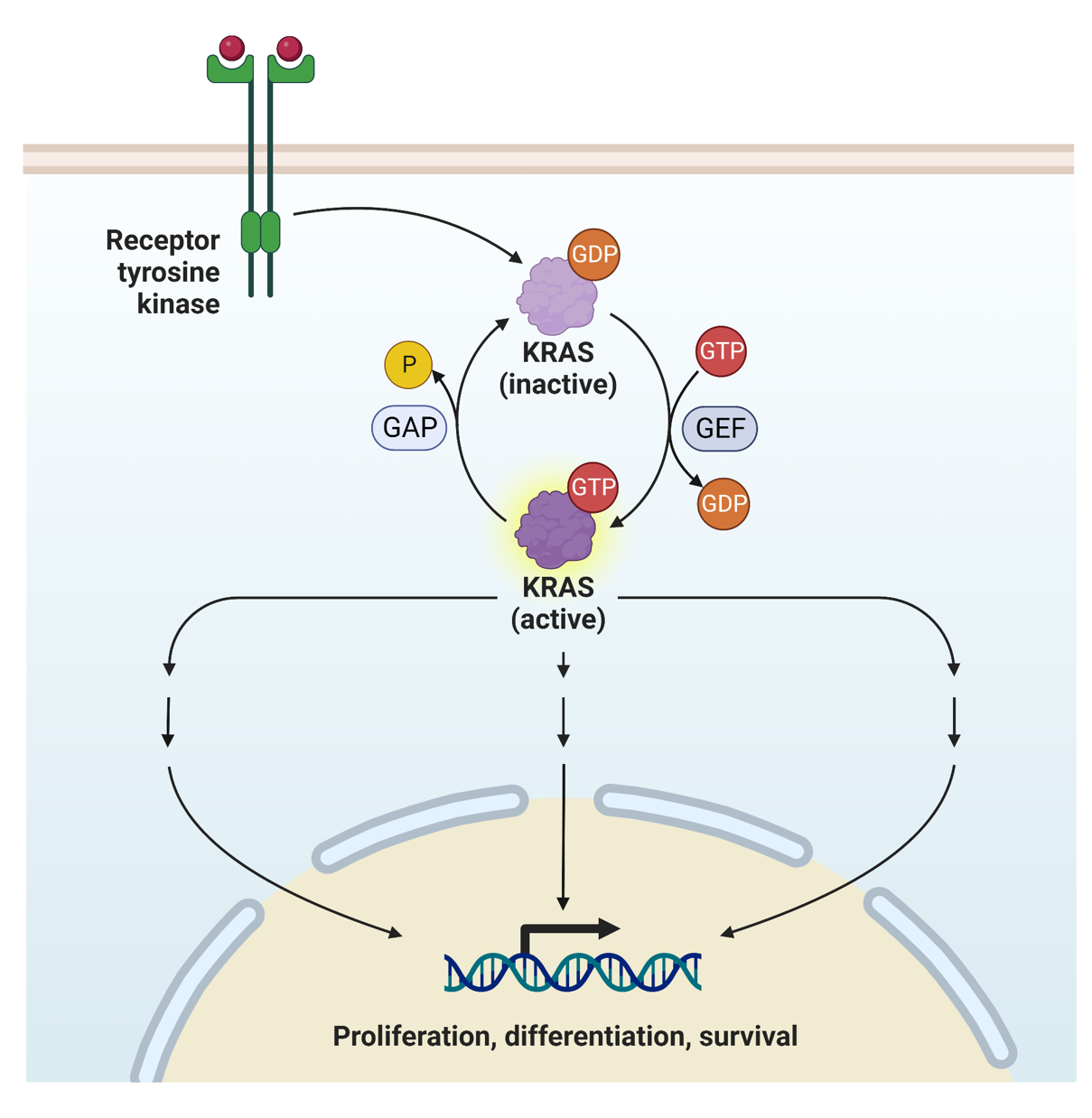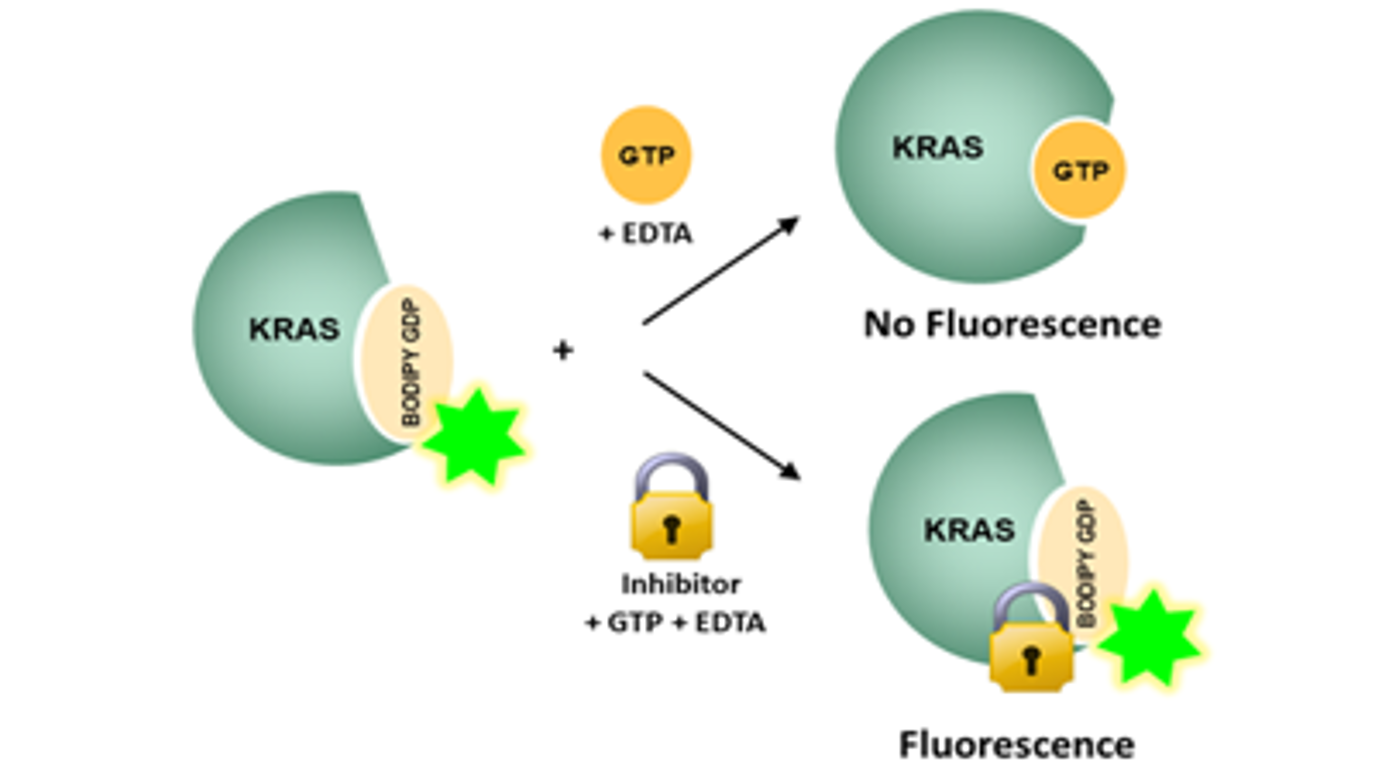KRAS Screening & Profiling Services
KRAS is an important protein in the RAS/MAPK signaling pathway that transmits signals from activated cell surface receptors leading to cell proliferation and survival. KRAS function is controlled by cycling through an inactive, GDP-bound state and an active, GTP-bound state. Activation of KRAS occurs when it binds to Guanine Nucleotide Exchange Factor (GEF) proteins, including SOS, which initiate the exchange of GDP for GTP. Active, GTP-bound KRAS can trigger activation of downstream signaling molecules including RAF, PI3K, and RAL. KRAS can self-inactivate by cleaving the terminal phosphate group on the GTP, converting it to GDP. This inactivation process is accelerated by GTPase-activating (GAP) proteins.
KRAS has emerged as a target of significant clinical interest, due to mutations in the KRAS protein that promote the pathogenesis of 20-30% of human cancers. Testing a patient for the presence of specific KRAS mutants serves as a highly predictive marker for success rates to various types of lung and colon cancer therapies. The development of inhibitors against KRAS G12C, G12D, and G12V holds a promising future for oncology.

We offer wild-type and mutant KRAS screening and profiling services to identify specific inhibitors. Our team of experts, using our in-house developed biochemical assay kits, can provide:
- Screening for activity across your compound library
- Determination of IC50
- Project guidance and questions answered in a timely manner
- Delivery of detailed results promptly and on time
If follow-up studies are required, we can provide the same active proteins as the ones used in our assays.
Learn more about the process and deliverables.
Fluorogenic Nucleotide Exchange Assay

Fluorogenic Nucleotide Exchange Assays are homogeneous assays designed for the screening and profiling of KRAS antagonists/inhibitors. In this assay, KRAS is pre-loaded with fluorescent BODIPY-GDP. Adding GTP in the presence of EDTA displaces BODIPY-GDP. The fluorescence intensity decreases as the BODIPY-GDP is displaced by GTP. Several KRAS inhibitors lock KRAS in the (inactive) GDP-bound conformation and prevent GDP/GTP exchange. In this scenario, the fluorescence intensity increases with drug concentration as more BODIPY-GDP remains bound to KRAS.
AlphaLISA® Coupled Nucleotide Exchange Assay

AlphaLISA® Coupled Nucleotide Exchange Assays are designed for the screening and profiling of KRAS antagonists/inhibitors by monitoring the binding of an effector protein such as the Ras binding domain of Raf1, (RBD-cRaf) to active KRAS (G12C, in this example). First, a sample containing GDP-loaded KRAS(G12C) is incubated with SOS1 and GTP for the nucleotide exchange. Next, RBD-cRAF is added and incubated for the effector-RAS binding. Then, acceptor and donor beads are added and incubated for detection followed by reading the Alpha-counts.
Available Service Assays
Note: Not all targets will have a commercially available reference control. Please inquire with our team if you need to furnish your own controls for specific targets.
Service Inquiry
│Related Services
- Cell Signaling Pathway Screening & Profiling
- Kinase Screening & Profiling
- Custom Biochemical Assay Development

